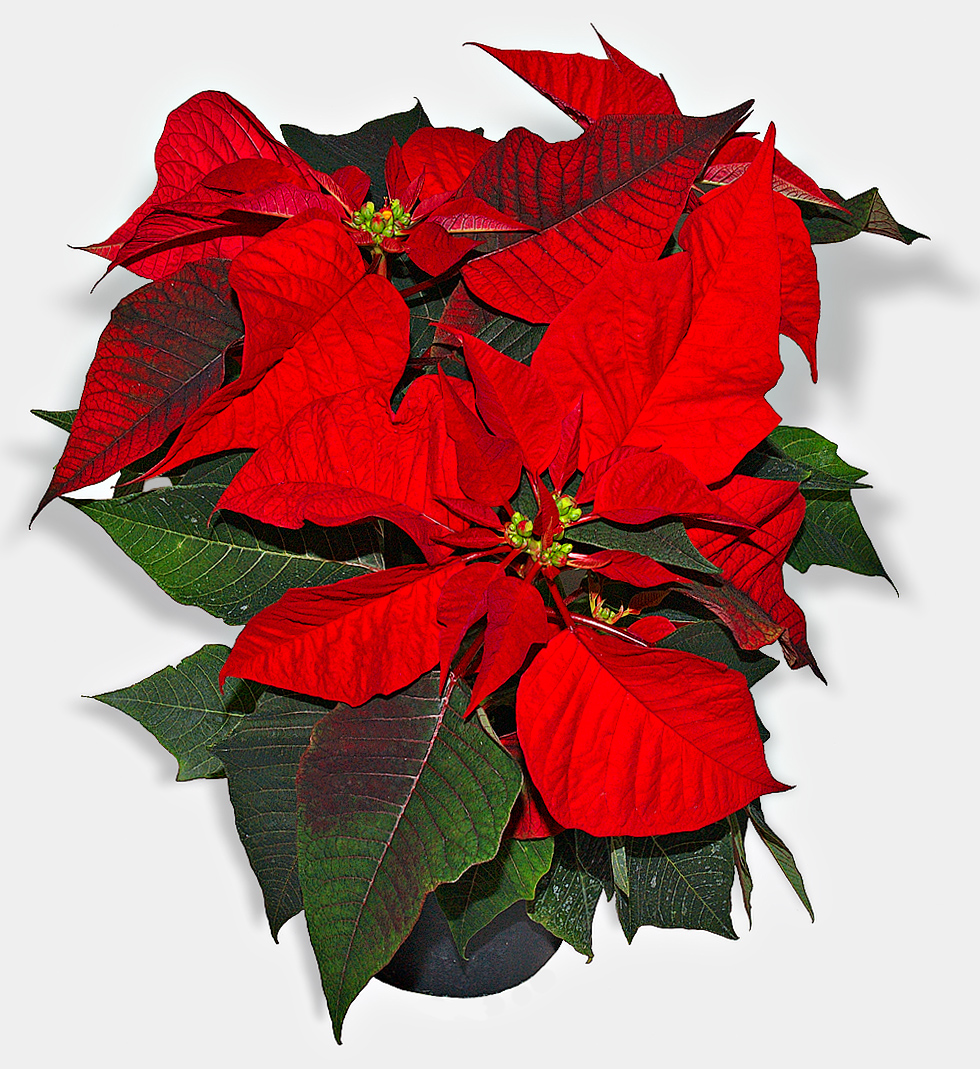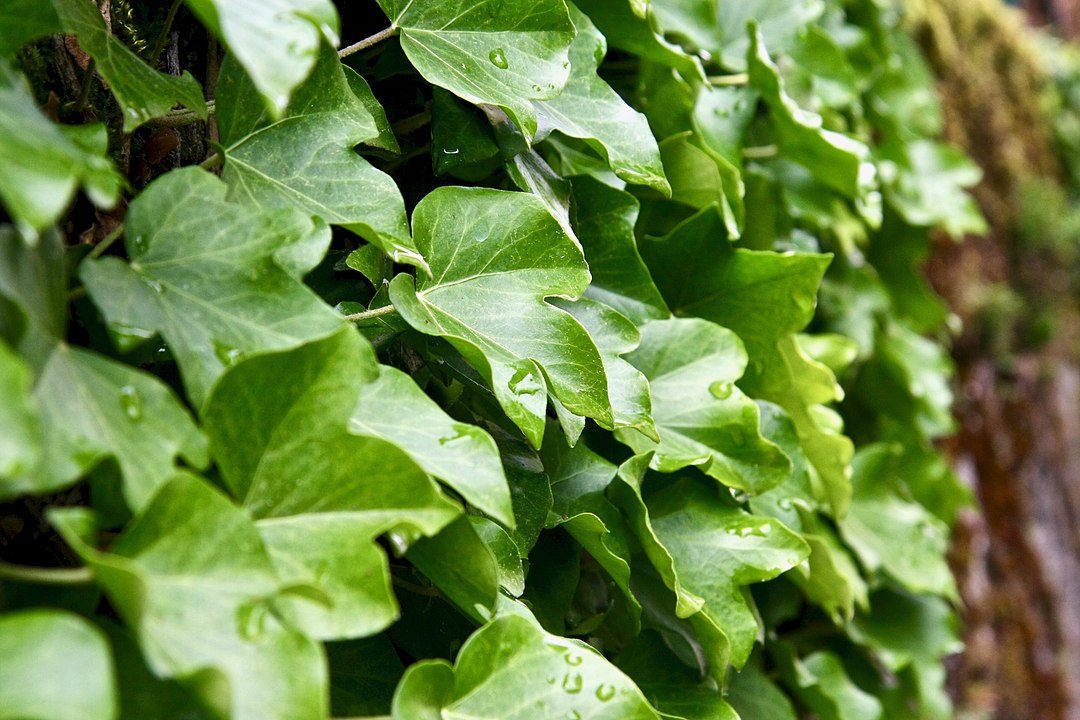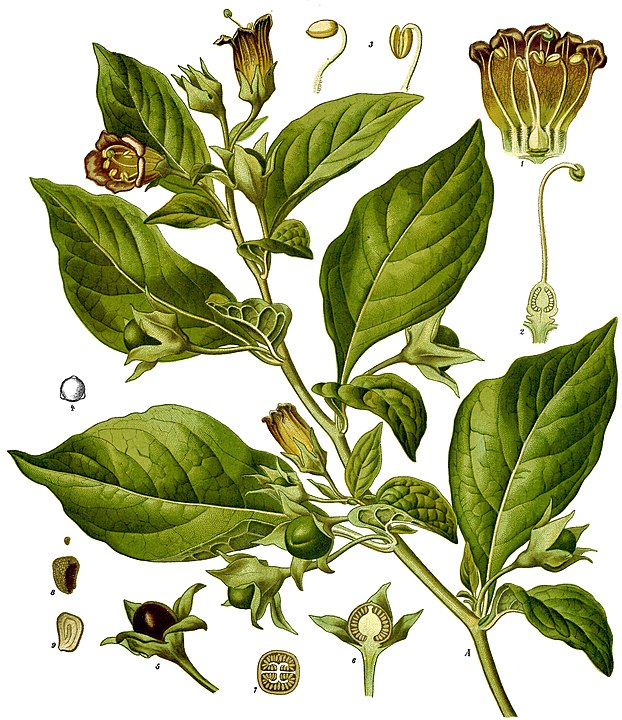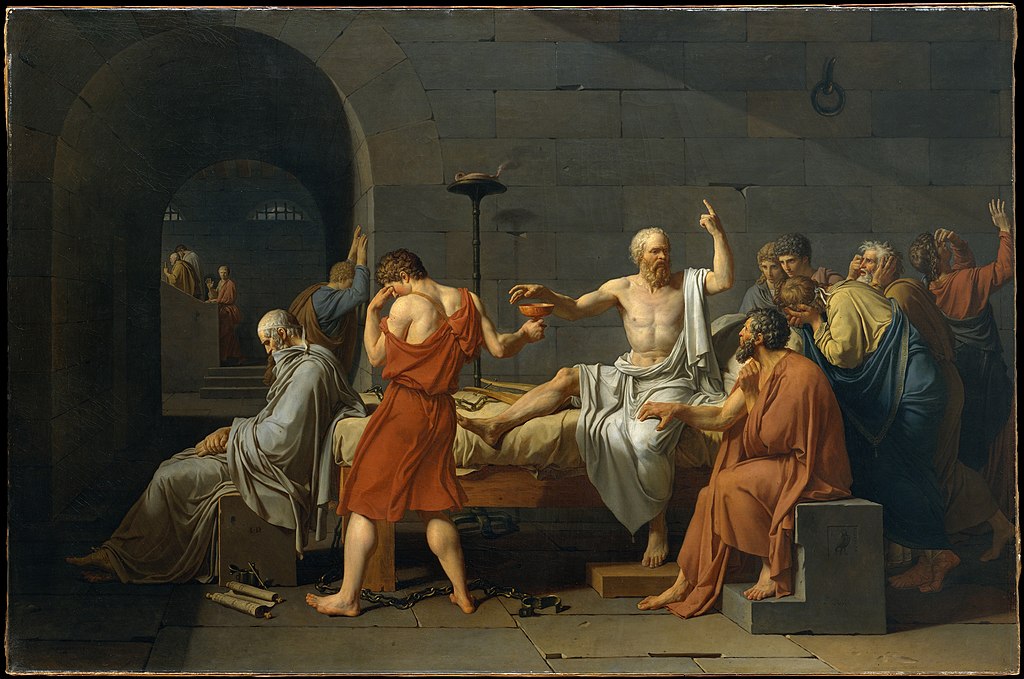Poisonous Plants
Poisonous plants have played a significant role in historical events and literature. In ancient Greece, hemlock was used to poison condemned prisoners. In ancient Rome, belladonna was thought to be the plant that Agrippina the Younger used to kill her husband, Emperor Claudius, and that Livia used to kill her husband, Emperor Augustus. Shakespeare featured poisonous plants in several plays, including belladonna in Romeo and Juliet and hemlock in Hamlet and Macbeth. A number of Agatha Christie mysteries feature poisoning by toxic plants, including The Labours of Hercules, where belladonna causes hallucinations and death in the victim; Five Little Pigs, which features hemlock disguised in a glass of beer; and The Mysterious Affairs at Styles in which poisoning occurs by strychnine.
Christmas plants
 The poinsettia is known for its bright red and green foliage and is by far the most popular Christmas plant in the US It is native to Central America and introduced to the US in 1825. Although the plant has long had a reputation as being very toxic and potentially deadly, scientists now say this is not the case. In fact, eating part of a poinsettia will probably not produce any symptoms and, worst case, mild nausea, and vomiting. The National Institutes of Health (NIH) says poinsettia is not poisonous to humans. Although cats and dogs may experience vomiting or diarrhea from ingesting poinsettia, the American Society for Prevention of Cruelty to Animals (ASPCA) says that the plant is “generally over-rated in toxicity.”
The poinsettia is known for its bright red and green foliage and is by far the most popular Christmas plant in the US It is native to Central America and introduced to the US in 1825. Although the plant has long had a reputation as being very toxic and potentially deadly, scientists now say this is not the case. In fact, eating part of a poinsettia will probably not produce any symptoms and, worst case, mild nausea, and vomiting. The National Institutes of Health (NIH) says poinsettia is not poisonous to humans. Although cats and dogs may experience vomiting or diarrhea from ingesting poinsettia, the American Society for Prevention of Cruelty to Animals (ASPCA) says that the plant is “generally over-rated in toxicity.”
Holly has long been associated with Christmas; its shiny green leaves and bright red berries are today’s colors of Christmas. The most toxic part of the plant is the berries, which contain theobromine, a chemical similar in structure to caffeine and is also found in cocoa and chocolate. Eating several berries will cause stomach pain, nausea, vomiting, diarrhea, dizziness, and low blood pressure. Holly berries are also toxic to cats and dogs but not to birds, squirrels, and deer.
 English Ivy is often used in Christmas decorations. It is a climbing plant that can grow up to 98 feet high on suitable surfaces. The leaves are usually dark green, with small yellow-green flowers and blue-black berries. The most dangerous part of the plant are the leaves which can cause severe contact dermatitis, accompanied by blisters when touched. It is poisonous when eaten, causing gastrointestinal symptoms, hallucinations, and seizures; however, a large amount of plant material needs to be eaten to cause symptoms.
English Ivy is often used in Christmas decorations. It is a climbing plant that can grow up to 98 feet high on suitable surfaces. The leaves are usually dark green, with small yellow-green flowers and blue-black berries. The most dangerous part of the plant are the leaves which can cause severe contact dermatitis, accompanied by blisters when touched. It is poisonous when eaten, causing gastrointestinal symptoms, hallucinations, and seizures; however, a large amount of plant material needs to be eaten to cause symptoms.
The next two plants are in a separate toxicity category from the Christmas plants discussed above; these two are so poisonous that eating just a tiny amount can be fatal!
Belladonna
 Atropa belladonna is the scientific name for belladonna or deadly nightshade. This extremely poisonous plant was named by Carl Linnaeus in 1753, choosing the genus name Atropa, after the third Fate in Greek mythology. The first Fate was Clotho, who spins the thread of life; the second was Lachesis, who measures and allots the length of one’s life. The third was Atropos, who ends it. The genus name is a derivation of Atropos, meaning “unturning one” or “inflexible.”
Atropa belladonna is the scientific name for belladonna or deadly nightshade. This extremely poisonous plant was named by Carl Linnaeus in 1753, choosing the genus name Atropa, after the third Fate in Greek mythology. The first Fate was Clotho, who spins the thread of life; the second was Lachesis, who measures and allots the length of one’s life. The third was Atropos, who ends it. The genus name is a derivation of Atropos, meaning “unturning one” or “inflexible.”
The species name, belladonna, comes from the Italian word “beautiful woman.” During the Renaissance, women used the juice of the berries in eye drops that dilated their eyes to enhance their beauty. The painting, Woman with a Mirror by Titian shows a woman thought to have used belladonna to enhance the beauty of her eyes.
Belladonna is native to Europe, North Africa, and Western Asia and was introduced to North America years ago. Atropine is the chemical in belladonna that causes the pupils to dilate and is responsible for its “beauty enhancing” effects. It is thought that in the first century B.C., Cleopatra may have used belladonna, or a similar plant with high amounts of atropine, to dilate her pupils to enhance her beauty.
Two other chemicals in belladonna, hyoscyamine, and scopolamine, have psychoactive effects, causing delirium and hallucinations. The symptoms of poisoning by belladonna include:
- Rapid heartbeat
- Dilated pupils
- Delirium
- Vomiting
- Hallucinations
- Convulsions
All parts of the belladonna plant are extremely poisonous. It only takes about 600 milligrams (mg) of belladonna to cause toxicity, and people can be poisoned by simply handling the plant since the toxins can be absorbed through the skin.
Interestingly, belladonna has been used throughout history as a weapon, poison, hallucinogenic drug, and medicine. Women who practiced witchcraft in the 1400s – 1500s mixed belladonna with opium and other plants in “flying ointments” to concoct a “witches brew,” which gave them the sensation of flying.
As a medicine, belladonna has been used as a pain killer, muscle relaxer, anti-inflammatory, and to treat peptic ulcer disease and motion sickness. In the US, it is usually marketed as an atropine ingredient in over-the-counter cold medicine products. Ophthalmologists use atropine to dilate their patient’s eyes, and it is used as an antidote to opium and chloroform poisoning. In 2009 and 2010, the FDA warned against using homeopathic teething tablets and gels containing belladonna for infants and children, stating that the products may be toxic.
Hemlock
 Hemlock, or poison hemlock, is a poisonous plant in the same family as parsley, fennel, and wild carrot (Queen Ann’s Lace). Its scientific name is Conium maculatum, with conium derived from the Greek word konas, which means “whirl” or “vertigo,” referring to one of its poisoning symptoms, and maculatum, which means spotted, referring to purple blotches found on its stalks. The plant can grow from 3 to 5 feet tall, and is native to West Asia, Europe, and North Africa, but it was brought to the US because of its attractive flowers.
Hemlock, or poison hemlock, is a poisonous plant in the same family as parsley, fennel, and wild carrot (Queen Ann’s Lace). Its scientific name is Conium maculatum, with conium derived from the Greek word konas, which means “whirl” or “vertigo,” referring to one of its poisoning symptoms, and maculatum, which means spotted, referring to purple blotches found on its stalks. The plant can grow from 3 to 5 feet tall, and is native to West Asia, Europe, and North Africa, but it was brought to the US because of its attractive flowers.
Like belladonna, all parts of the plant are highly poisonous. The chemical that causes its toxicity is coniine, which has a chemical structure and pharmacological properties similar to nicotine. Ingestion of more than 150-300 mg of coniine (about 6 to 8 hemlock leaves) may be fatal. Most poisonings result from ingestion (usually from confusing it with a nontoxic plant), but inhalation and skin contact can also cause toxicity.
Symptoms of poisoning include:
- Nervous trembling
- Salivation
- Lack of coordination
- Dilation of pupils
- Respiratory paralysis
- Convulsions
- Coma
 Socrates is the most famous victim of hemlock poisoning. In 399 B.C., Socrates was accused of “refusing to recognize the gods of the state” and “corrupting the youth of Athens.” He was given the death sentence at his trial; however, the court gave him the right to choose how he wished to die, and Socrates chose suicide from hemlock tea. Plato described Socrates’ death, and in 1787, Jacques Louis-David painted a romanticized version of the deathbed scene. (It is doubtful that Socrates could have sat up and given a lucid speech after ingesting hemlock).
Socrates is the most famous victim of hemlock poisoning. In 399 B.C., Socrates was accused of “refusing to recognize the gods of the state” and “corrupting the youth of Athens.” He was given the death sentence at his trial; however, the court gave him the right to choose how he wished to die, and Socrates chose suicide from hemlock tea. Plato described Socrates’ death, and in 1787, Jacques Louis-David painted a romanticized version of the deathbed scene. (It is doubtful that Socrates could have sat up and given a lucid speech after ingesting hemlock).
Like many other poisonous plants, hemlock loses much of its poisonous properties when cut and dried. Historically, medicine used hemlock to treat muscle spasms and cause sedation. Although not recommended due to its extreme toxicity, herbalists have used it to make medicine for breathing problems, including bronchitis, whooping cough, and asthma; and for painful conditions, including swollen and painful joints and cramps.
Here’s hoping you have a great holiday season and please stay away from any plants that can cause you harm.




